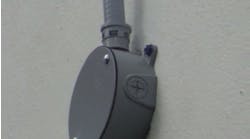Your safety system is only as good as the procedures, training, attitudes, and decisions that comprise it. As with any system, a defect can lead to a malfunction — and a malfunction may produce an adverse safety event, something we call an accident even though it’s nearly always the result of deliberate actions and/or inactions.
If you can detect and correct defects in this system, you can largely prevent adverse safety events. But you must do that deliberately, it won’t happen by accident.
Here are seven common defects along with insight into what to do about them.
Low compliance with specific safety requirements or practices
Not just supervisors, but also coworkers, need to be on the lookout for this. Then dig in to determine the underlying cause.
For example, why does everyone skip Step 3 of a particular procedure? To figure this out, ask each electrician for honest, even brutally honest, feedback. Maybe that step is unrealistic due to (removable) barriers to compliance.
Sometimes it’s a lack of understanding. For example, a confined entry permit is specific to time and personnel. Someone too poorly trained to understand this might try to use someone else’s confined entry permit when serving as that person’s relief (and a poorly trained operator might allow that).
Unsafe conditions unresolved before proceeding
Sometimes, an employee notices an unsafe condition and reports it to a supervisor who then promises to investigate it. The employee then “carefully” works with that condition present. This greatly raises the odds that someone will get hurt. The supervisor must respond to the complaint immediately, not after other things are out of the way. Safety is the top priority; other concerns can wait. One way to handle an unsafe condition is to empower the affected employee to “own it” until resolution has occurred. But that’s not always feasible. The employee may not have the time, expertise, organizational authority, or other resources to solve the problem.
So the supervisor must assess the safety issue and reach a decision that doesn’t count on “being careful” (luck). That could mean, for example, roping off the area and reassigning the employee. Resolution doesn’t necessarily mean removing the hazard. Resolution might mean reducing the hazard to a level where correctly chosen and used personal protective equipment (PPE) ensures the employee is protected (e.g., a hot work permit).
Unsafe acts
Employees typically commit unsafe acts for the sake of convenience. For example, standing on the top rung of a ladder is more convenient than getting a taller ladder — and “it will take just a minute” (famous last words). It is more convenient to string two lanyards together due to lack of a proper attachment point in the needed location than it is to stop work and resolve that issue — and it’s a good way to break your back.
You don’t solve the unsafe acts problem by having supervisors write people up if they catch them committing an unsafe act. That method results in a game of “don’t get caught” rather than a mindset of “work safely.” A proven approach is to empower all employees (including, of course, supervisors) to stop someone who is committing an unsafe act. Then a short discussion ensues as to why that act is unsafe and how to perform the task safely. This system works when employees are genuinely concerned about their safety and that of their coworkers. It’s a coaching relationship.
Not everyone is amenable to coaching. In such cases, the supervisor may use progressive discipline up to and including termination. In some cases, termination is immediate because of the seriousness of the safety infraction (such infractions are normally spelled out in an employee manual or similar document).
Inattention
One way that screen addiction reduces safety is the distraction effect. Some people try to multi-task while interacting with their screens. Multi-tasking is an illusion, the reality is your attention switches between tasks, and there is blank-out time during the switches. If you’ve had one of those phone “conversations” with someone who is texting or checking e-mail, you’ve witnessed this effect. Those texts or e-mails are similarly subpar because that person was talking on the phone while writing.
The consequences of inattention when performing electrical work can be much more severe than a nonsensical message or a confusing conversation. If you’re a manager, make it clear that people must focus on their work and not have distractions. Safety, work quality, and efficiency all require this.
If you’re a worker, find ways to clear your head of distractions. There are plenty of books on the topic. Or try focus training. You practice focusing for five minutes at a time until doing so is easy. Then increase the time to 10 minutes. No texts, no casual conversations, no thinking about what you’ll be doing after work. Focus intently for just a few minutes until such focus becomes a habit, then increase your focus time as you build your “focus muscle.”
Incorrect use of personal protective equipment (PPE)
This includes such things as clipping a lanyard to a raceway instead of an anchor, relying on a dust mask to protect against gases, relying on work gloves for shock protection, etc. It’s sometimes said that “some PPE is better than no PPE,” but the reality is that inadequate PPE or incorrectly used PPE is still unsafe. Ensure everyone is trained in PPE usage, and that all procedures identify the PPE required for the given task.
Incorrect use of ladders, lifts, and other equipment for working at elevation
The two main contributing factors are insufficient training and insufficient equipment. Training can be insufficient if it’s too infrequent, too much at once (like drinking from a fire hose), or not enough. Training must be followed up with observing how people put it into practice.
If people make do with what they have because they don’t have what they need, you have an insufficient equipment problem. Identify the working height and equipment types needed during the project proposal stage (if a contractor) or based on the specific jobs people do in the facility (if maintenance).
Incorrect use of test equipment
A common error, especially with digital multimeters (DMMs), is that of holding a test lead in each hand and moving them toward their respective measuring points at the same time. This can result in some communication between the leads in the form of an ionization trail, and that sets the stage for an arc flash.
Other errors include using the wrong CAT rating of equipment, not properly connecting the “ground” of equipment with a “ground” connection, using a DMM to directly measure amps on service, feeder, or branch circuits (it’s protected by a 2A fuse and whatever physical distance is in the meter between that post and another post), performing a “circuit must be de-energized” test on a circuit that hasn’t been de-energized, and using damaged test leads.
The most common reason for these errors is insufficient training. People must not only be trained in how to perform specific tests with specific test equipment but also on what not to do with specific test equipment. They must know where it can be used within the power distribution system and where it cannot be used within the power distribution system.
A good general “fix it” for the CAT problem in industrial facilities is to ensure that all test leads and equipment are rated CAT IV where practicable. Where it is not practicable, then equipment not so rated should be unmistakably identified (e.g., affix a “lab only” sticker and maybe paint a red stripe around it). Keep such equipment under controlled distribution with checkout available only to technicians/electricians who are certified on that equipment. This kind of setup will keep lab equipment out of the field, while still making it available for laboratory/shop use.
Going beyond the bare minimum
Don’t stop at the seven preceding defects alone; they are just examples. Your firm or plant may have many others that aren’t on that list. So how do you find them? A good way to do that is to train everyone — not just supervisors — to look for unsafe acts. People can then report these in the regular safety meetings. It isn’t necessary to identify who did what, only to identify what was done (or not done).
This then becomes feedback for identifying gaps in training, problems in procedures, and deficiencies in equipment. If standing too high on step ladders is a frequent problem, you most likely don’t have enough step ladders of the correct size. It may not be practical to have an array of many sizes of step ladders, and a solution to that problem is to replace the shorter ones with multi-mode or multi-position ladders. If people are “repairing” test leads with phasing tape, an obvious solution is to make new test leads readily available.
Electricians routinely diagnose and repair problems with wiring and equipment, and they are typically very good at doing so. Use the same talent to diagnose and repair problems in your safety system.




